Borghese Gallery Tickets
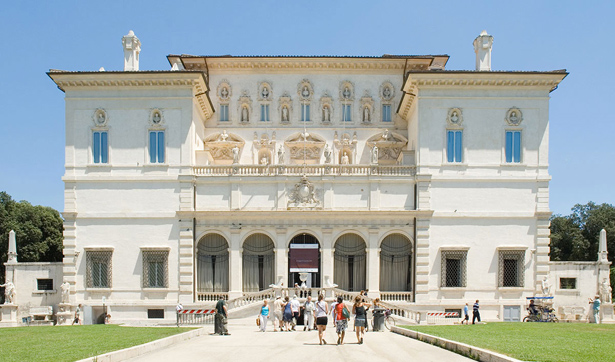
Borghese Gallery tickets — Everything you need to know
The museum of the Borghese Gallery in Rome is undoubtedly a must-go stop for art lovers who visit Rome.
The Borghese Gallery is in the villa of the same name at Piazzale Scipione 5, in Rome, of course.
Even the villa and its magnificent park on their own are worth visiting. The one-time home of the ultra-powerful Borghese family, the villa has the absolute charm of a great aristocratic Roman villa.
Construction began on Villa Borghese in the late 16th century and then it was expanded and modified over the 17th and 18th centuries. Major master architects worked on it, including Gianlorenzo Bernini.
Borghese Gallery Park
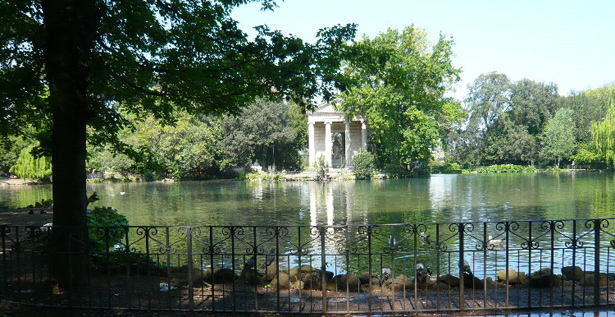
The villa's garden is another beauty with its Italian-style gardens, English-style sections, buildings, fountains, and even a lake. And the Borghese Gallery is one of Italy's most visited museums. It holds within masterpieces of great Italian painters and sculptors.
Borghese Gallery tickets — Why book them
The Borghese Gallery Museum is always quite crowded, so it's a good idea to plan ahead and book entrance tickets or a guided tour. The important thing is to book plenty ahead of time. For safety reasons, the number of visitors allowed inside the gallery is limited to a few hundred. This is why you often see that a reservation is required to get into the museum. It's more accurate to say that it's practically impossible to get in without a booking given the number of visitors allowed in at once.
Borghese Gallery Tickets hours
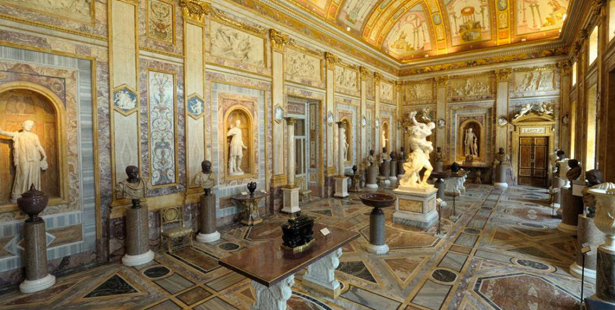
You should know that you need to choose the time range for your entrance tickets to the Borghese Gallery. Visitors can choose the time to start their visit and can stay in the museum for two hours. After the two hours is up, you'll have to make room for the visitors from the next time slot.
There are five time slots available, starting at 9:00 am, 11:00 am, 1:00 pm, 3:00 pm, or 5:00 pm.
The Borghese Gallery museum is open from Tuesday to Sunday, closed on Monday. On some special occasions, the museum is also open on Monday, on or around holidays, such as the Monday after Easter.
Entrance must be booked online paying the ticket in advance. Visitors will receive a voucher to exchange at the ticket office when entering. It is also good to know that you should come 30 minutes before your booked time to go through the security checks now essential for all museums.
Borghese Gallery tickets: Do I have to print them?
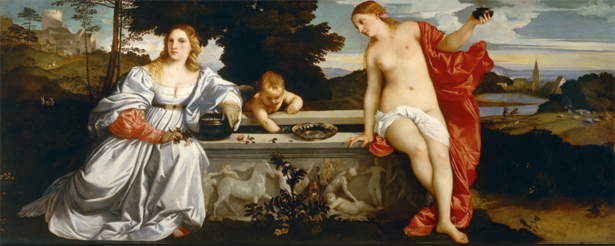
Many visitors ask if to enter the Borghese Gallery they have to print the voucher out to get the tickets. Starting in 2017, the voucher sent by email does not necessarily have to be printed. You can just show a digital image of it as long as the booking code is clearly legible.
Borghese Gallery — Getting there
A frequently asked question is how to get to the Borghese Gallery museum, especially which metro stop is closest.
The nearest metro stop to Borghese Gallery is Spagna. But, don't be fooled, though the Spagna stop is definitely the closest, once you're at the Spanish Steps, you still have about a half hour walk. If you don't want to walk or take a taxi, your best bet is the bus. There are several, very convenient lines that go there.
Borghese Gallery — What to see
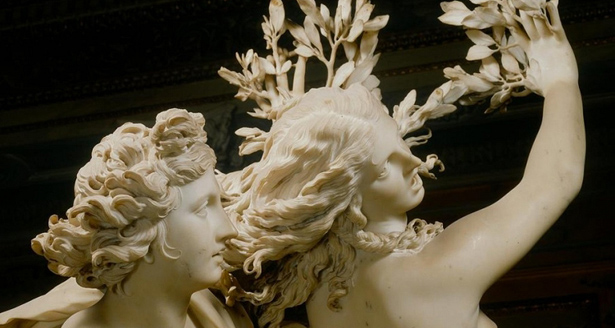
We need hardly say that the Borghese Gallery is home to countless art masterpieces of great artists, such as Caravaggio, Canova, Bernini, Titian, Raphael, and many others. The beautiful marble statue of Apollo and Daphne surely is one of the pieces that makes the biggest impression when you visit the Borghese Gallery for the first time.
The group of statues depicting Apollo and Daphne was inspired by Ovid's Metamorphoses. Apollo boasted of being able to shoot a bow and arrow better than anyone. To punish Apollo's arrogance, Cupid shot him with an arrow and made him fall in love with the nymph Daphne. But she had already devoted her life to the goddess Artemis. Daphne asked her father, Peneus, to help her and so he turned her into a laurel tree to let her escape Apollo's amorous madness. In this scene, Daphne is being chased by Apollo and stretches forward while her transformation into the laurel tree begins. Her hands take the shape of branches and leaves, her hair and legs become the trunk and her feet, the roots. Daphne's expression is stunned and terrified. Bernini rendered Ovid's text flawlessly.
Enjoy the museum!
The Roman Colosseum
The Roman Colosseum is undoubtedly
the symbol of the eternal city of Rome and even after two thousand years after its construction, it
rises prominently as one of the most extensive archaeological sites in the world. The real name of the Colosseum is the Flavian Amphitheater, after the Emperor Titus Flavius Vespasian who ordered its construction.
To visit the Colosseum, purchase an entrance ticket which entitles you to visit the inside of the Colosseum, the Roman Forum and the external archaeological area of the Palatine.
The Roman Colosseum is in a valley, surrounded by three of the seven hills of Rome: the Esquilino, the Esquiline Hill (which in archaic Latin means “forest of cork oaks”) and the Celio.
The Caelian Hill, whose name derives from the hero Celio Vibenna who helped Servio Tullio become the sixth king of Rome is one of the seven famous hills of Rome. The ancient name of the hill was Querquetulanus (oak forest), where gladiators (prisoners of war and slaves) lived in barracks (Luddi) which were divided according to their nationalities: germans, Celts, greeks and Africans. These barracks were connected with each other and with the Colosseum by a system of underground tunnels.
The Palatine The Palatine Hill perhaps the most famous hill (the word “palazzo” in European languages derives from the Palatine Hill: the “Palace of the Ceasars”). The Roman Emperors, from Augustus to Constantine, lived here for four hundred years, from 42 B.C. to 330 A.D.
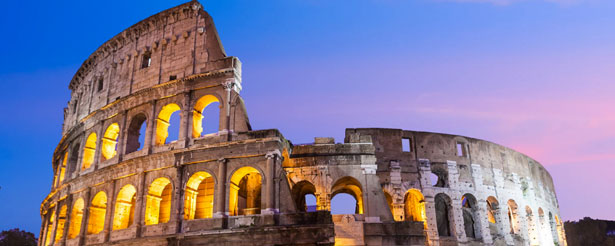
The Roman Colosseum - a gorgeous monument
The Colosseum’s name comes from the “colossale” statue of Emperor Nero. The statue which is 35 meters high and made of glided bronze, was later transformed into the Helios sun god during the time of Hadrian (second century A.D.). During the sack of Rome in 410 A.D. by the Visigoths (former soldier mercenaries hired by the Roman army) led by Alaric, the statue was melted down and now only the pedestal remains. Visitors can enjoy this huge block of stone and realize the majesty of the destroyed statue while heading towards the main entrance of the Colosseum marked by oak trees and two cypress trees.
THE DIMENSIONS OF THE COLOSSEUM
The size of the Colosseum in its original plan boasted 52 meters high and 527 meters in perimeter. The amphitheater was well equipped with 76 entrances reserved for public access. On the arches to the right of the entrance you can still see the numbers above each entrance, in Roman numerals, for example LIII, LIV, LV. In addition, there were for four entrances for logistics and services. This immense structure could accommodate a total of 50,000 spectators: 45,000 seated and 5,000 standing in the top area, which corresponds to the fifth level, where there were usually the slaves and the common people. To protect the public from the sun and the rain there was a complex removable protective structure called the “Velarium,” composed of triangles of transparent fabric and waterproof canvas. The triangles were connected by metal rings and the removable structure was controlled by pulleys, hoists and ropes which were operated by 300 sailors. Outside the Colosseum, 100 meters to the left of the entrance, you can still see the five cleats that secured the anchor ropes that held up the giant mobile structure.
THE ROMAN COLOSSEUM STRUCTURE
The structure of the Colosseum is divided into five overlapping and concentric elliptical rings made of travertine, a material from the quarries of Tivoli. Each ring corresponds to a different class of Roman society. As previously mentioned, the common people and the slaves occupied the standing area of the fifth ring, the furthest away from the arena.
To ensure stability in this gigantic structure, special areas of reinforcement were designed both inside and outside the ring. Outside you can still see the holes where the huge bronze clamps welded with lead were inserted; these clamps were removed and fused during the Middle Ages for other purposes due to the shortage of metals. Inside the Colosseum bronze bars were used to hold the travertine blocks firmly together.
The amphitheater was decorated and embellished with numerous statues under each arch starting from the second level.
Before the construction of the Flavian Amphitheater the area was occupied by Nero’s golden House. This area extended for about 88 hectares and was occupied by palaces, gardens and even a lake: the Stagnum Neronis. Nero committed suicide in 68 A.D. when he was 31, and after there was a brutal civil war for the succession to the throne. Vespasian, an army general, killed the three pretenders to the throne, Otho, galba and Vitellius. Once in power he destroyed and partly buried the Domus Aurea and thus erased the memory of Nero’s presence (in Latin Damnatio Memoriae).
Lake Nero was drained and the foundations of the Colosseum were laid. The actual construction of the Colosseum began in 72 A.D. The amphitheater was inaugurated by the son of Vespasian, Titus, and was completed by Domitian in 86 A.D. The resources needed for the construction of this imposing architectural work, the money and slaves, all came from the spoils that the Romans secured with the destruction of Jerusalem and the Temple of the Jews in 70 A.D.
THE ROMAN COLOSSEUM SHOWS
The shows were organized during the summer for 18 hours a day and in the winter for 15 hours a day, two or three times a year in cycles of a week or more, but not every day, as the overall maintenance of the complex was very expensive and was practically entirely covered by the public. It is believed that the entrance ticket, which was in the form of a small clay tablet, cost very little and was sometimes even free.
In the mornings the fights took place with the wild beasts, lions, tigers, panthers, elephants, bulls, mastiffs dogs, bears, wild boars and gladiators. Weapons used included the trident, net, iron plated gloves and the Roman gladius sword which was about 70cm in length.
In the afternoons the audience watched the gladiators fight. The battles did not always end in the death of one of them because the gladiators were considered public figures very dear to the people and therefore they did not welcome death. The gladiators often organized bets amongst themselves and sometimes the public could attend public executions in the form of fighting or re-enactments of battles. The latter was a very impressive event as the arena was set up with scenery and animals that came up from the underground through a complex system of lifts, elevators and ramps. Between 80 and 86 A.D. the Roman authorities often staged naval battles in the Colosseum. There were gladiatorial battles on boats. In fact, they flooded the Colosseum for the occasion by using a complex hydraulic system which used the pre-existing channels of water from Lake Nero.
In 86 A.D. the Colosseum was completed by finalizing the underground and creating a wooden platform in the Arena which covered the sand used to absorb the blood from the fighting.
The shows were stopped in 523 A.D., especially those that involved hunting animals, and soon after the Colosseum was abandoned. During the Middle Ages it first became a burial ground, then the fortress of the Frangipane and then a rich quarry of materials (we believe that the steps of St. Peter’s Basilica were created using the large blocks of travertine from the Colosseum). The Colosseum was then considered a place where magical practices were carried out; it was believed to be cursed and that exorcism took place inside the walls. On the occasion of the Jubilee of 1675 the Flavian Amphitheater assumed the character of sacred place for the number of Christians martyred here, the tradition that requires a place of torture of Christians. It, however, was then suspended. In 1744 Pope Benedict XIV built the 15 shrines of the Cross and in 1749 the Colosseum was consecrated as a place of worship to Christ and the Christian martyrs. For the past two centuries, the Pope has celebrated the Way of the Cross inside the Coliseum on good Friday, during the Easter holidays.
Upon entering, on the right, after the ticket check point, you can see the Cross which indicates the consecration of the site. On both sides there remains pillars of the Loggia of the Emperors. The Loggia of the Emperors was the place where the public could see the Caesars and watch the shows.
Behind the Cross it is possible to go underground, where there are two levels reaching ten meters below ground level. This area housed the cages with the animals, the storage of gladiator’s weapons and the sets used during the performances. Here, even today, you can see the complex system of ramps, elevators, and trap doors that opened onto the wooden platform, to let in the animals and gladiators. To get a better idea of how these mechanisms worked, which were considered extremely ahead of their time, visitors can observe the reconstruction of the elevators located next to the modern elevator on the second floor.
The current wooden platform was rebuilt 14 years ago in about one-fifth of the total area. The marble seats for the public are completely gone, because some of this precious material was reused elsewhere for other building projects and the rest was destroyed by the earthquakes of the past centuries. Visitors can see a reconstruction of these marble seats in the area to the left of the cross.
The restoration work to save the Colosseum, due to damage caused by man’s negligence and the effects of time, was begun by Pope Pius VII in 1806. The first restoration projects were designed by architects Stern, Valadier, and Canina from 1811 to 1830. The results of this restoration work done in brick are still visible at the outer ends, including the fifth ring and the arches in brick, which are located at the exit of the monument, which corresponds to the third ring.
After 2,000 years we still do not know the name(s) of the person or people who designed and built the Colosseum, considered the seventh wonder of the ancient world, an impressive and extraordinary architectural work, still today the most innovative model of sport stadiums.
On the right upon leaving the Colosseum is the Arch of Constantine.
The Roman Forum

THE ROMAN FORUM
: next to the Colosseum!
A thousand years before Christ, this area was a swampy valley, furrowed by streams running down to the bottom of the adjacent hills, the burial place of the Latin tribes. Recently in the area of the Curia, urns were found da- ting back to the Iron Age (1500 B.C.). During the last period of the Tarquinii monarchy (VI century B.C.), the swamp was drained and the water channeled into the “Cloaca Maxima,” the great sewer system of Rome, which still works today. With the transition from Monarchy to Republic in 509 B.C., this area became the center, the heart of the political life of Rome (the Roman Forum, and more precisely in the Curia, where the Senate met), where trade took place, and social organi- zation and religion flourished in the city. In the seventh century A.D. the forum was abandoned because of the Greek-Gothic wars, and many of the buildings were transformed into churches, convents and monasteries. Some of the buildings were used as material quarries and stables for animals.
Interest in this area so rich in history increased again in the nineteenth century.
Archaeological excavations began in 1803 and with Napoleon’s strong push for the project, work continued between 1809 and 1814, and finally systematically during the 30’s under the Mussolini administration.
Here is the recommended route to visit the Roman Forum.The visitors meet on the right toward the bottom of Palatine Hill.
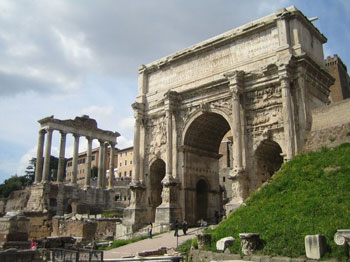 THE ARCH OF TITUS
THE ARCH OF TITUS
This arch was built on the Velia, a small hill that connected the Palatine to the Esquiline, 15 years after the destruction of Jerusalem in 70 A.D. It was built in memory of the military triumph of Titus during the Jewish wars. Inside, in the keystone, you can see a basrelief representing the apotheosis of Titus being transported to heaven by an eagle and deified. On the bottom left it is possible to see the triumph of the emperor and to the right the spoils of war: the Menorah’s seven-branched candlestick and the silver trumpets of the Temple of Jerusalem, the so-called Chazzozerot Kesef. The Menorah disappeared from Vespasian’s Temple of peace of during the sacking by the Visigoths in 410 A.D.
To the right of the arch is the Church of Santa Francesca Romana, which occupies part of the Temple that Hadrian dedicated to the Goddess of Rome (see the Temple of Venus and Rome). Going down “Via Sacra”, otherwise known as the path of the “Triumphs”, on the right we have:
THE BASILICA OF MAXENTIUS-CONSTANTINE in the Roman Forum
The last great basilica built in Rome. It was started by Emperor Maxentius and completed by Costantine in 312 A.D. The structure, with three naves supported by massive brick pillars flanked by columns, was decorated with gigantic statues. From these statues it is possible to see the remains of the atrium of the Palace of the Conservatives in the Capitoline Museums (the remains of the statue of Constantine). The basilica was a building for civil activities (commerce, administration of justice, currency exchange and a meeting place). The prototype is Greek. In fact, “basilica” means “portico of the king,” the “ stoà basileios.” At the end of the Punic Wars (second century AD), the Romans imported this type of basilica from Athens. With Constantine, after the Edict of Milan in 313 A.D. which formalized Christianity, the basilica became the model place of worship for the Christians.
THE TEMPLE OF ROMULUS
This structure was dedicated to Romulus, the son of Emperor Mazentius who drowned in the Tiber River in 307 A.D. It is a round shaped temple; in the sixth century A.D. the hall behind the temple was transformed into the Church of Saints Cosmas and Damian. The door is original, made of bronze and dates back to the fourth century A.D., and so is the lock which is from the same period and still works perfectly.
The Temple of Antoninus Pius and Faustina
This temple was built in the honor of the adoptive parents of the Emperor Marco Aurelius. The temple was later dedicated by Antoninus Pius in 141 AD, in memory of his wife Faustina. In 161 A.D. the building was also dedicated to the Antoninus Pius newly deceased. In the seventh century A.D. the temple became a church dedicated to San Loren- zo in Miranda, for the association of pharmacists. In 1602, due to problems with the land, the church underwent some renovations in Baroque style com- pleted by Torriani. The current access is at street level outside the Forum.
THE BASILICA AEMILIA and the Roman Forum
This is the second basilica built in Rome in 179 B.C. after the Basilica Porcia of 185 B.C. Along the outside opening, there were many handicraft shops. You can still see the dividing walls. The remains date back to the fifth century A.D. The basilica was burned in 410 A.D. by the Visigoths under King Alaric.
THE ALTAR OF CAESAR
The temple built in 29 B.C. by his nephew Octavian, better known as Augustus (meaning protected by the Gods in all of his acts), is the place where Julius Caesar’s body was cremated and was worshiped as a God. Inside, on the tufa stone where Caesar’s body was burned, to this day, on March 15 of each year flowers are placed in his honor. He was the first politician to be deified. Behind the Altar of Cae- sar are the remains of the “Regia”, an ancient place dating back at least to the seventh century B.C., what remains today of this work is a reconstruction dating from around 36 B.C. The Royal Palace, residence of the “Rex Sacrorum” the authority responsible for sacred ceremonies, later became the office of archives of the “Pontifex Maximus” and a meeting place for various associations of priestho- od such as the “Salii”, the “Fratres Arvales” and the “Pontifex”.
To the left of the Altar of Caesar we have:
THE HOUSE OF THE VESTALS AND THE TEMPLE OF VESTA
The temple of Vesta is a circular building, of which only a small part remains. It was dedicated to the Goddess Vesta, goddess of fire and the hearth. The Vestals were a sacerdotal college of women founded by Romulus or Numa Pompilius and first consisted of three or four virgins and then later six or seven. The Vestals were recruited for cooptation by Pontifex Maximus between six and nine years of age, from the most illustrious families of the Roman aristocracy. They remained in office for thirty years: ten years of apprenticeship, ten years of service and ten years as a teacher. Their purpose was not only to preserve the sacred fire, but also to prepare the “mola salsa,” a toasted grain flour with salt to be used for the sacrificing of animals (the term sacrifice comes from the term “mola salsa”), to conserve the objects connected to the foundation of Rome and its testaments. They had consular dignity, which were accompanied by the fasces, they had reserved seats in public performances, they were freed by the father, and if a condemned man met a vestal he was pardoned. They could not be killed cruelly, in case of a loss of physical purity and ritual, they were buried alive outside the city. Their home was a large two-story house surrounded by a garden porch and central basin. The remains which we see now are remakes of the Severan Era of 191 A.D.
THE TEMPLE OF CASTOR AND POLLUX
(DIOSCURI – CASTOR AND POLLUCE)
Only three Corinthian columns remain of this structure, which are overarched by a restored architrave. The temple was built to celebrate the Discuri cult: in fact, in the battle of Lake Regillo in 496 B.C., aided by the Dioscuri, the Romans won against a coalition of Latin people. The present temple is a reconstruction from the second century A.D.
Who were the Dioscuri?
The Dioscuri were two mythological figures also present in Greek mythology. They were two twin brothers Castor and Pollux or the Polideuce sons of Zeus and Leda, best known as the Dioscuri, ie “sons of Zeus”, but also as the castores. They were sometimes regarded as the patron of poetry, dance and music. Among their many businesses, Castor and Pollux were two of the Argonauts, the heroes who took part in the search for the Golden Fleece. After the temple of the Dioscuri, “Vicus Tuscus”, we find the remains of the Basilica Julia, built in 170 B.C. by Censor Sempronius Gracchus, the father of the Gracchi tribunes, Gaius and Tiberius. In 55 B.C. the Consul Julius Caesar replaced it with a larger basilica.
CURIA OF DIOCLETIAN at the Roman Forum
Again on the right we find the Curia of Diocletian: the current brick structure is not the original, this once housed the Senate meetings of the Republican period. The Curia (the place where the Senate met) was located approximately where the Church of St. Luke and Martina (the Church of painters) now stands. Then during the first century B.C. Julius Caesar moved the Curia lower down, and finally, with Emperor Diocletian, in 305 A.D., it was completely rebuilt. The current door is a copy. The original door was moved and is used today as the main door of the Cathedral of St. John Lateran. The Curia of Diocletian hosts two panels carved in basrelief of the Trajan period (first century A.D.), the scene depicts the Emperor Trajan, who repays the Roman citizens’ debt with the public treasury. Another scene shows three animals that were sacrificed in religious ceremonies, the “suovetaurilia”, the pig (sus), the ram (ovis) and the bull (taurus). The floor is made of inlaid marble (opus Alexandrinum) of the fourth century A.D. The niche at the bottom, housed the statue of “Victory” placed here by Octavian in 31 B.C. and then removed by the Christian Senators in 402 A.D.
LAPIS NIGER (BLACK STONE)
The Lapis Niger was named after the black marble pa- ving slabs. The archaeological site was discovered by Boni in 1899, and was soon associated with the tomb of the founder of Rome, Romulus, or the place where Romulus had ascended into the heavens. Below the floor is an archaic temple of the seventh or sixth century B.C. Inside the temple is a stone wall mutilated with an inscription in Latin, similar to the Greek alpha- bet, ancient and difficult to translate.
THE ARCH OF SEPTIMIUS SEVERUS
This arch was built between 202 and 203 A.D. to ce- lebrate the military victories of Emperor Septimius Severus against the Parthians. The arch was also dedicated to his two children Geta and Caracalla. Later when Caracalla became Emperor, he had his brother’s name canceled from the arch (damnatio memoriae). The monument is considered a model of its kind for the harmony of proportions. Between the Temple of Saturn and the Arch of Septi- mius Severus there are additional interesting architec tural structures including:
THE ROSTRA
The Rostra was a high platform where political orators gave their speeches in front of the people of Rome. They got their name from the “Rostra”, the tips of the ships captured by the Roman in 338 B.C. during the battle of Anzio.
THE TEMPLE OF VESPASIAN (DEIFIED EMPERORS)
Only three columns of this temple remain. The temple was built by the son of Vespasian, his successor, Titus in 87 A.D. and was completed by Domitian.
THE TEMPLE OF SATURN
The current version of the Temple of Saturn is composed of only eight columns which have survived the centuries. The remains of this temple date back to the reconstruction in the fourth century A.D. It was dedicated to Saturn, the god who introduced and taught agriculture to the Latins. Below the temple, underground, they kept a large supply of gold bars and silver that could be used in the case of a public emergency.
THE COLUMN OF PHOCAS
This column was the last honorary column erected in the forum in 609 A.D. It was in honor of the Byzantine emperor Phocas who in 608 A.D. for Pope Boniface IV tran- sformed the Pantheon, the first pagan temple, into a Christian Church.
THE TABULARIUM AND THE CAPITOL
The Capitol Hill closes the valley between the Forum. Currently the three arches of the ancient Tabularium (the State archive of ancient Rome in 78 B.C.), are part of the foundation of the Senatorial Palace, that of the city of Rome. To the right of the Tabularium, on Capitol Hill was the temple of Jupiter. Now we can see the remains preserved and exhibited in the Capitoline Museum and the Palace of the Conservatives.
Saint Peter’s Basilica Entrance Tickets
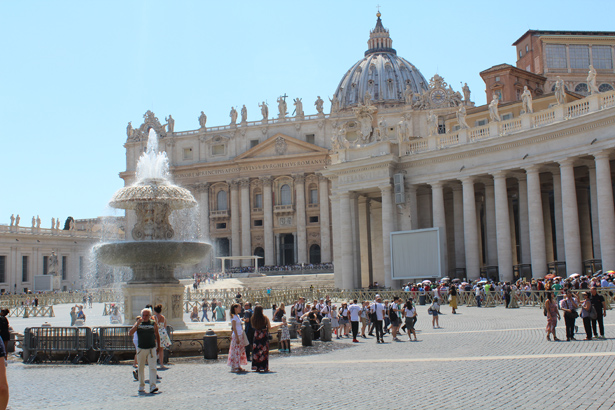
All you have to know to plan your tour to Saint Peter's Basilica: useful tips!
Are you planning to visit Rome? Here are all the tips to organize your visit to St. Peter’s Basilica in Vatican, a must for those who decide to visit the Eternal City.
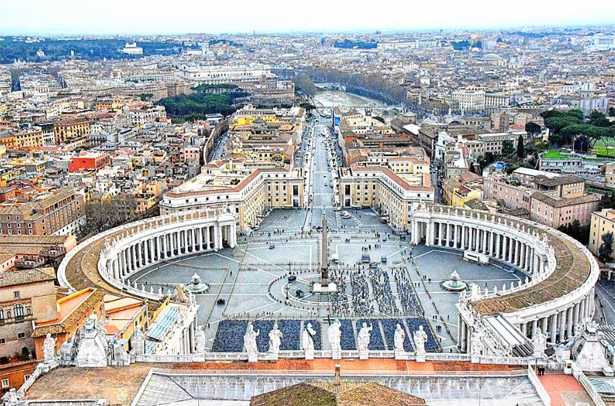
St. Peter’s Basilica is the universal and undisputed symbol of Christianity, as well as being one of the largest and most majestic religious buildings in the world and a treasure trove of masterpieces of great masters.
St. Peter’s Basilica is located at the end of Via della Conciliazione, a large avenue leading to St. Peter's Square. The square marks the boundaries of the Vatican City and is bordered by the imposing Colonnade built by Bernini.
The colonnade symbolizes the Catholic Church that embraces its faithful often gathered in the square to attend the religious celebrations of the Holy Father, bishop of Rome.
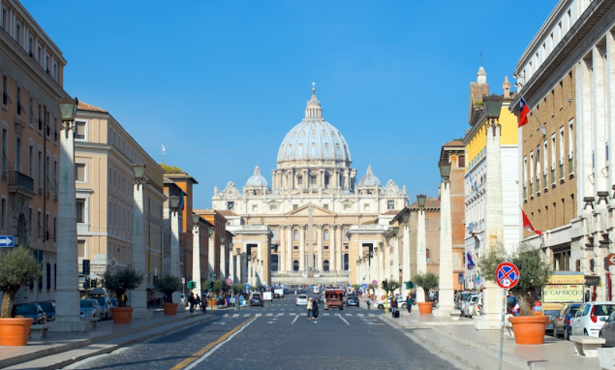
Already from the bottom of Via della Conciliazione, you can admire the impressive Basilica and its iconic dome created by the magnificent, Michelangelo.
St. Peter’s Basilica, as we can see it today, was built between 1508 under the papacy of Pope Julius II, and 1926, midway between Renaissance and Baroque art.
Great artists such as Bramante, Raffaello, Pirro Ligorio, Michelangelo and Bernini participated in the project and the realization of the huge basilica.
St. Peter’s Basilica Entry without waiting
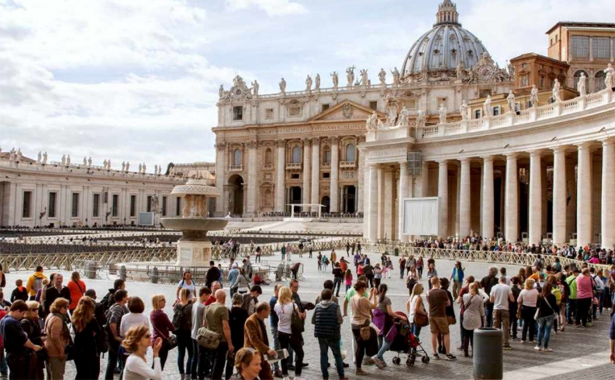
The entrance into St. Peter is free, but often the Basilica is extremely crowded with pilgrims and tourists. Especially between March and October, and during the Christmas holidays, entering the St. Peter’s Basilica can take hours of waiting standing in the crowded square. Therefore, here are some useful tips to visit St. Peter’s Basilica by limiting waiting time to a minimum.
St. Peter’s Basilica Entrance from the Vatican Museums
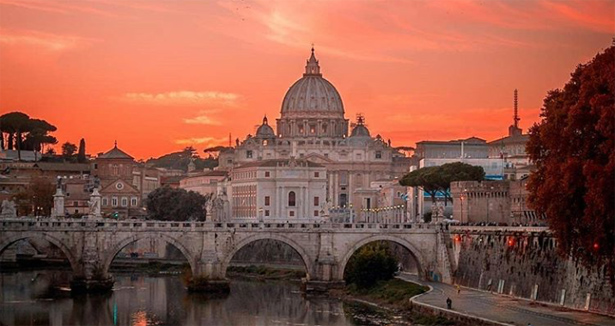
For those who have decided to visit both the Vatican Museums and St. Peter’s Basilica, the advice is to book tickets for the Vatican Museums and then access in St. Peter’s through the internal passage that connects the Vatican Palace to the Basilica located behind the Sistine Chapel.
This passage named Scala del Sacramento is usually open to visitors who have concluded their visit to Vatican Museums. As soon as the visit inside the Sistine Chapel is over, visitors can descend to the Basilica along this staircase, without having to make long waits which are usually in the Square.
But be careful, this step is not always open and is not an acquired right of visitors who have paid the ticket for the Vatican Museums. It is more simply a concession from the Vatican Museums to their guests. However, if the passage was unused or closed for the decision of the direction of the Vatican Museums or even more of the Holy Father, visitors wishing to access and visit the Basilica must exit the museums. At this point they will have to walk up to St. Peter’s Square and access the basilica from the main gates, standing in line. Nothing can be claimed for not having access the basilica.
St. Peter’s Basilica Entry with Audio guide
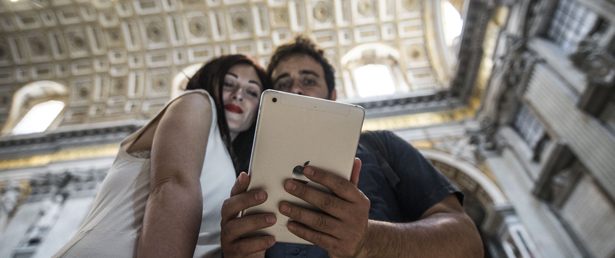
If you want to be 100% sure to avoid the queue at the entrance to St Peter, then better not to rely on the good heart of the direction of Vatican Museums and go on the safe booking entrance with the audio guide. In this case, in fact, visitors holding this reservation, can enter the Basilica from a reserved access and limit waiting times.
But exactly what is it and how does it work?
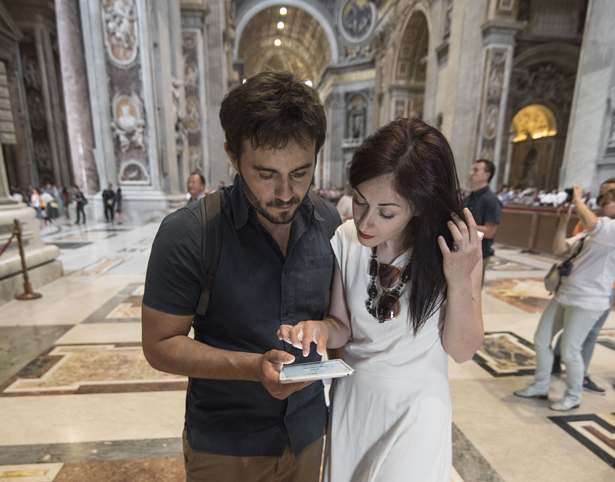
By booking the entrance with audio guide in St. Peter the visitor can enter the Basilica in a few minutes, choosing a convenient time slot of two hours by which he can freely present himself at the entry point reported. The staff will then invite visitors to perform the normal check procedures to metal detectors. Once entered, you will be given the code to put the audio guide into use. This audio guide includes an exhaustive explanation on the entire architectural St. Peter’s complex.
Once entered, you will be given the code to put the audio guide into use. This audio guide includes an exhaustive explanation on the entire architectural St. Peter’s complex. The audio guide has been created ad hoc by art historians directly appointed by the Vatican to guide the visitor inside the monumental complex and help him discover magnificent treasures in it. The audio guide can be heard directly on your mobile device (smartphone or tablet). You can easily download the app from home once you have completed your online booking and be ready for your visit! DOWNLOAD instructions now!
The staff that will welcome you in the Basilica is usually very friendly and helpful and will be at your disposal to help you activate the device. For all visitors who, due to technical problems, are unable to complete the activation, or if you do not have a latest generation device, you will be provided with a traditional audio guide that will allow you to visit the Basilica in complete freedom.
St Peter’s Entrances: some rules to be respected
Being a religious building, there are of course simple rules to be respected common to all the realities of this type. In particular, you must have appropriate clothing, so no shorts for men and not too low-cut women, preferably the shoulders must be covered. You will have to observe silence or speak in a low voice. You cannot introduce animals, nor consume food or drinks. Lastly, access to visitors on a tourist visit with an audio guide is not allowed during Holy Mass.
St. Peter's Basilica Entrances with Authorized Guide
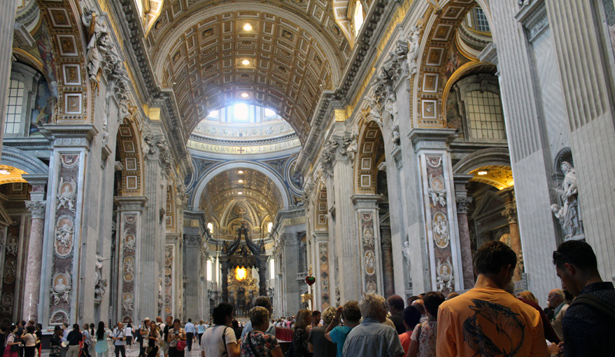
Another way to visit the Basilica by avoiding the queues is to organize a tour with an authorized guide. Our guided is available either with private guide, so with exclusive guide just for you, or by joining a group. In both cases the tour is strictly managed in a single language of your choice among those available. The main differences between the two solutions are the price (more expensive for the tour with private guide) and the duration: the private one lasts about two hours, the group one hour and 15 minutes.
In addition, if you decide for the private guided tour, you can ask the guide to customize your itinerary and then linger more on the works of your greatest interest. Regarding the group tour, the itinerary is standard, but still includes all the salient aspects of the architectural complex, its history and the works kept inside. Once the tour is over, you can stay in the Basilica at your leisure until the closing time.
St Peter’s Entrances: Does it include the Dome and the Tombs of the Popes?
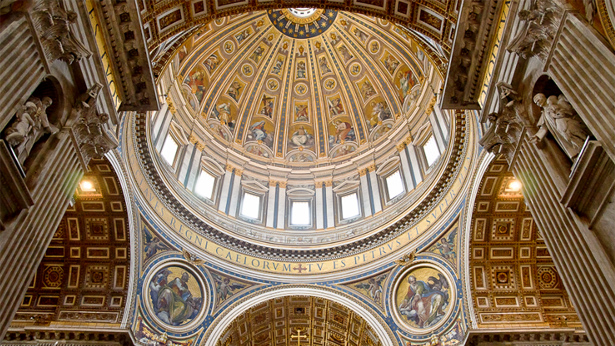
This is one of the most frequent questions that is often asked by tourists who plan a visit to the Basilica. The answer is no. The audio guide entry, the simple free entry, in the same way of the guided tours of which I have spoken in this article, do not include the climb of the Dome, nor the visit to the underground part where are the tombs of the pontiffs. For these particular sections, it is necessary to make an ad hoc reservation.
To find out more I leave you the contact number +39 055/2670402.









